





This pictorial article is the 4th of an alphabetical introduction to some of the most magnificent flowering succulents. Aloes are one of the best and most used landscape plants, coming in a huge variety of sizes, shapes and colors. But if that were not enough to attract a collector's attention, many aloes also have some of the best flowers of all the succulents, rivaling the most spectacular flowers of all plants. The following is a continued alphabetical listing, as an introduction to this species many floral presentations as witnessed in Southern California.
Aloe sabaea is a peculiar tree aloe from Yemen (technically Asia- so one of the few aloes NOT from AFrica at all) with its overly large, droopy leaves and skinny trunk... but the flowers of this species are unique and beautiful
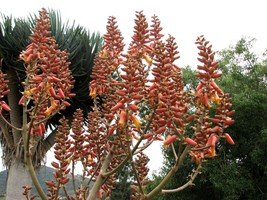
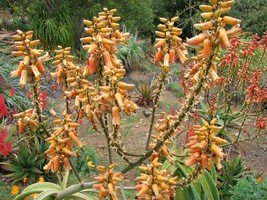
Aloe sabaea has highly branched inflorescences with very open conical racemes with yellow, orange or red in winter
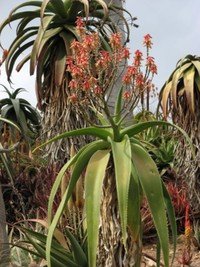
This is one of the few tree aloes grown in cultivation NOT from South Africa (from Saudi Arabia and Yemen)
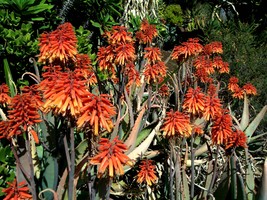
Aloe schelpei is another non-South African aloe (from Ethiopia). It has head-shaped racemes of pale orange to deep red depending on the maturity of each flower (open flowers are pale, while unopened ones are deep red)
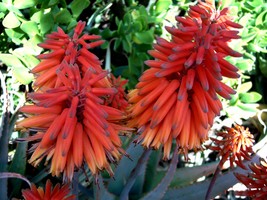
Close up of Aloe schelpei flowers
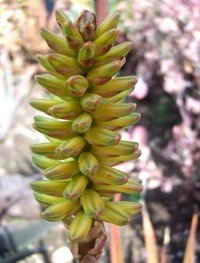
Aloe schomeri is a Madagascan aloe with unique, moderately dense racemes of horizontally oriented yellow flowers
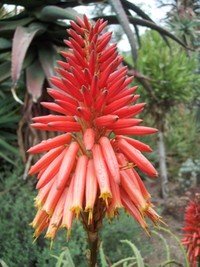
This is yet another aloe NOT from South Africa- from central Africa- though its inflorescences look somewhat like those of Aloe arborescens. This is Aloe scorpioides
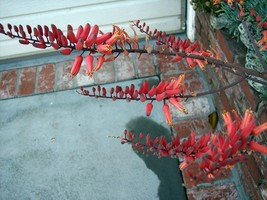
Aloe secundiflora is a popular landscape plant in the southwest because it not only is a beautiful plant itself (leaves red or orange of lime green) but it has these amazing flowers multiple times a year
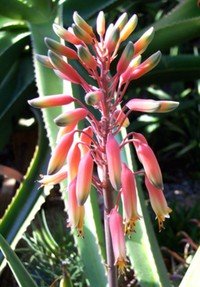
and here is yet another aloe from Africa but not the south end- Aloe sheilae, one of the few truly non-toothed aloes.

This is another north African species, Aloe sinkatana, and a very popular aloe used in hybridization, perhaps due to its unique, disc-shaped yellow racemes
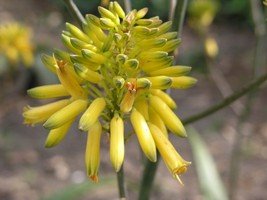
This is a hybrid species growing at the Huntington Gardens called Aloe 'Sophie'. It is a large, spotted aloe with these brilliant yellow flowers all year long (never see this aloe NOT in flower!)
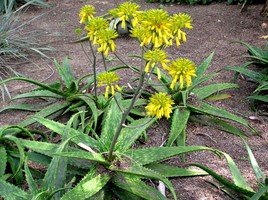
Here is the plant in flower and how it looks basically all year round
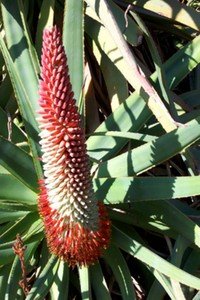
Aloe speciosa, the Tilt-head Aloe, has some of the most spectacular flowers of all the aloes with these huge cones of red, white and orange in winter
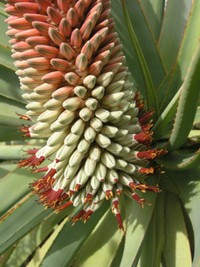
As the flowers get ready to open, they turn from pink-orange to white with green striping... and then they open showing their deep red stamens
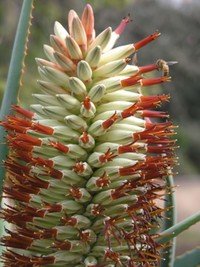
Aloes with huge flowers like these are very popular with the bees
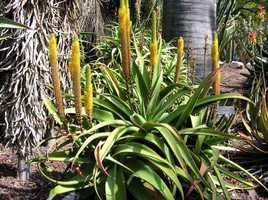
Aloe spicata is a spectacular South African aloe with multiple branching inflorescences, of which 90% are covered with the compact cylindicral yellow or orange racemes.
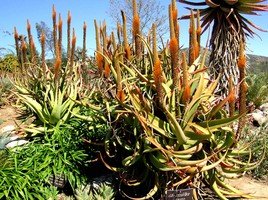
Like many aloes with tubular shaped racemes, these flowers usually show multiple colors until completely spent
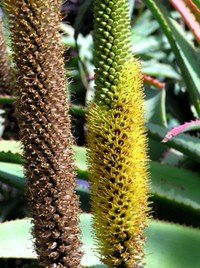
Close-up of dead flower and one full of nectar (the black liquid in center of each opened flower)
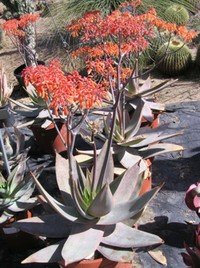
This is one of the most commonly grown of all the aloes- Aloe striata- showing its typical bright red-orange flowers in winter
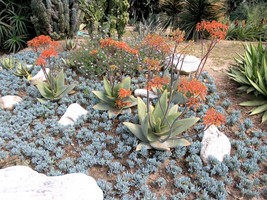
It is a great landscaping plant and one of the easiest to grow- very hardy!
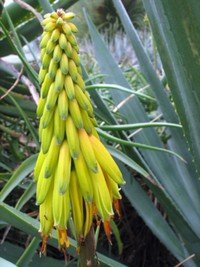
Aloe striatula is one of the many climbing, vining South African aloes- many look a lot alike, but this is the only one with these uniquely flattened, compact bright yellow racemes
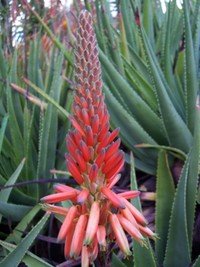
This is a very attractive and neat aloe (Aloe succotrina) and would be equally popular to growers without these wonderful red winter flowers
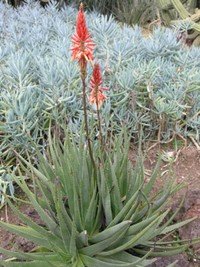
Winter flowers of Aloe succotrina
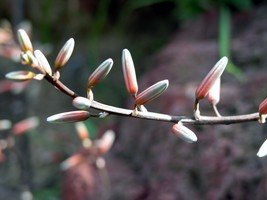
Certainly not the most ornamental of flowers, but this central African plant, Aloe suffulta, has uniquely very long, weak inflorescences that fall and drape over the surrounding foliage. The flowers are so spread out that it is hard to call their collective unit a raceme
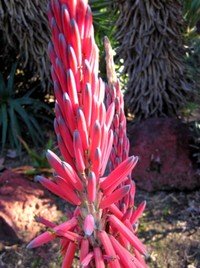
Aloe suprafoliata is another great landscape aloe and has thick peduncles topped with these bright red racemes
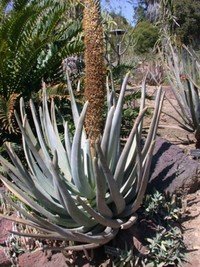
Though this aloe, Aloe suzannae, may not have the most ornamental flowers of all the aloes, they are magnificent structures- huge columns up to 6' or more covered with literally thousands of flowers
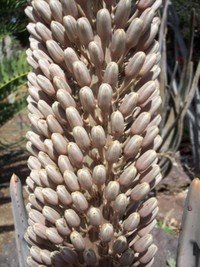
These plants flower rarely, perhaps 1-2x every 10 years or more, but once they do, the flowers persist for over a month... though the flowers themselves open up only near the very end (this photos shows upopened flowers)
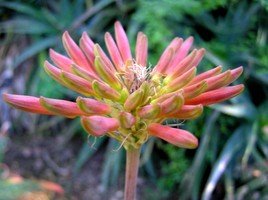
Another fairly common-looking spotted green aloe from South Africa, Aloe swynnertonii has a unique 'flying-saucer' shaped pink and yellow raceme that makes it easy to identify only in winter
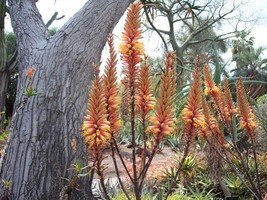
Some inlcude Aloe taurii with Aloe spicata, but some do not. This is a hybrid form of Aloe taurii with the most amazingly colored flowers
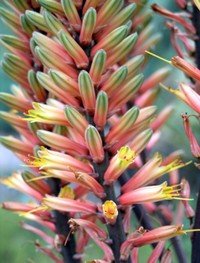
They have red, pink, orange, yellow and green all on the same flower. It is a shame this is not a commonly available plant

Another of the South African climbing aloes, this one is Aloe tenuior, and has very open racemes of pale to bright yellow flowers- some forms have red or orange flowers
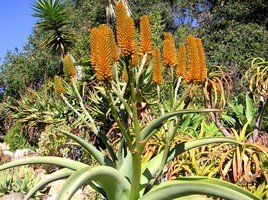
This is a great landscape tree with the classic arched leaves and these striking orange corn-cob shaped racemes in winter- Aloe thraskii
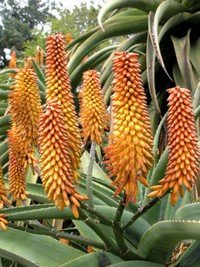
Close up of Aloe thraskii flowers
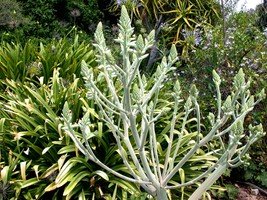
The only aloe I know to form white, fuzzy flowers is Aloe tomentosa, a late summer to fall bloomer
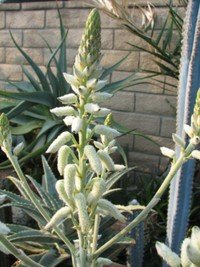
The flowers are actually covered with a thin later of white fuzz giving the plant its obvious name
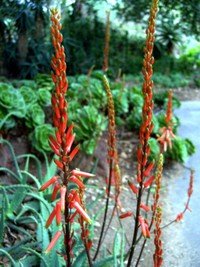
These flowers may not be substantial on Aloe troroana, but they are a very deep red-orange, making them stand out particularly well against the background of deep green which makes up the rest of these plants
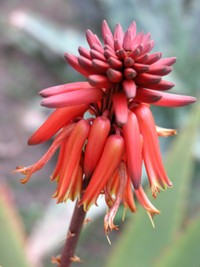
Aloe ukambensis is one of the most colorful of all the aloes in terms of foliage- deep red to purple in times of stress. The scarlet flowers only add their beauty
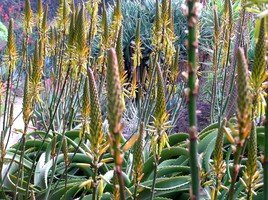
This is Aloe vanbellenii, a prolific flowerer in winter making these tall, skinny solitary to branching inflorescences of yellow to orange
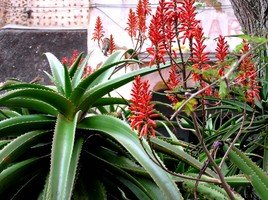
Close up of Aloe vanbellenii

This deep green Madagascan tree aloe (Aloe vaombe) makes one of the largest, red flowers of the aloes, right at Christmas time, making it a great Christmas aloe (this is a shot of them in Busch Gardens, Florida at Christmas)
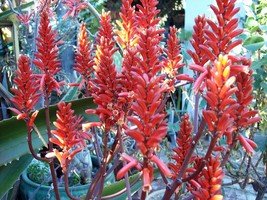
It is a great tree aloe for those who want a fast, attractive species that makes great flowers- these flowers are on a plant grown from seed just 7 years earlier
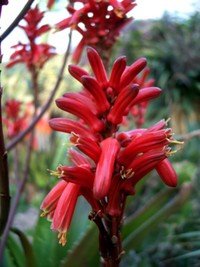
Close-up of Aloe vaombe flower
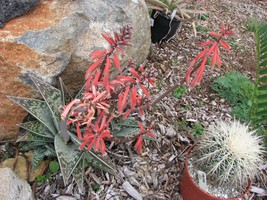
at the other end of the size spectrum is the common dwarf aloe, Aloe variegata, not necessarily known for its striking flowers
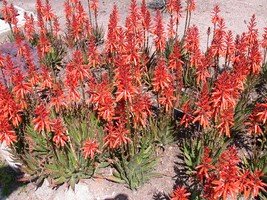
This is an easy landscape aloe, Aloe virens, and a good one for mass flowerings NOT in winter (this is late summer in southern California)
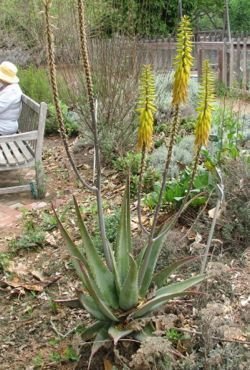
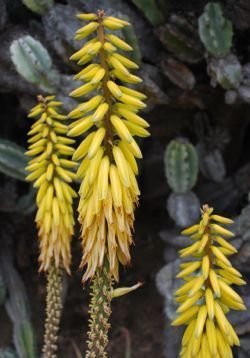
and of course there is the omnipresent Aloe vera (also referred to sometimes as Aloe barbadensis), the plant that is in doznes, if not hundreds of cosmetics, nutrional supplements and nurseries around world. This plant also blooms year round and sometimes in red but yellow is the more common color. It is a very commonly kept indoor succulent but rarely blooms as an indoor plant- really needs to be grown outdoors
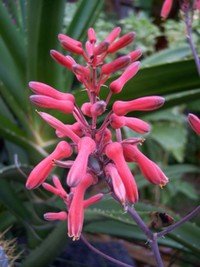
In nature, Aloe vogstii, another spotted aloe, makes inflorescences that tilt, sometimes nearly horizontally. However, not all cultivated plants do that.
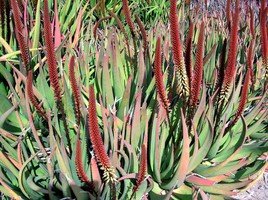
Aloe vryheidensis has flowers that look just like Aloe spicata, but this hybrid (with what?) has marvelous maroon and white flowers
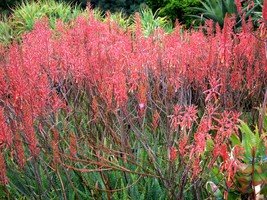
This is a large colony of a hybrid plant, Aloe wilsonii X elgonica, creating an amazing mass of red that can be seen from a long distance away
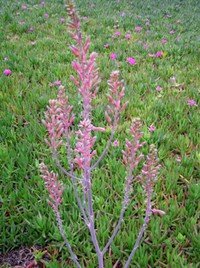
Aloe zebrina is yet another hard-to-tell-apart spotted South African aloes, but it has these pale pink flowers in fall, not winter
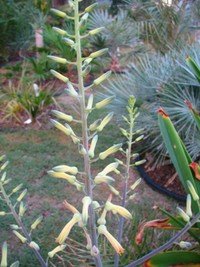
and also this pale yellow form, though much less common in cultivation
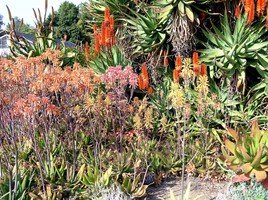
Aloe scene from Los Angeles arboretum
This ends the alphabetical introduction to aloe species commonly (and some uncommonly) seen in cultivation. There are literally hundreds more aloes in cultivation but this venue is not the right one for creating a complete cataloguing of such plants. Part 5 and last of this article series will be out some time later. It is one which while contain close ups and unique shots of some other aloe flowers not covered in these last 4 articles. Look for it.
Copyright © www.100flowers.win Botanic Garden All Rights Reserved